Your Call
Which of today’s three early morning San Diego images do you like best? Why did you make your choice?
BIRDS AS ART Office Phone Out!
A tree fell on our phone lines while I was away. 863-692-0906 is currently down. If you need to get in touch with Jim or with me, please try my cell at 863-221-2372. If I do not pick up, please shoot us a text.
Ordering Used Gear from B&H
To order used gear from B&H using my affiliate link — they have a large selection, please start with this link, and then type Used Department in the search box. Then do a search for you item. Doing so will not cost you one cent extra and helps me out a ton. The prices, however, will be higher than on the BAA Used Gear Page (but they have a lot more stuff).
What’s Up?
I head for the Auto Train this coming Sunday and Long Island on Monday.
Today is Tuesday 26 July 2022 and I have lots to do. Wherever you are and whatever you are doing, I hope that you too have a great day. This blog post took about 90 minutes to prepare and makes one hundred twenty-four days in a row with a new one.
Please remember to use the B&H and Amazon links that are found on most blog pages and to use the BIRDSASART discount code at checkout when purchasing your new gear from Bedfords to get 3% back on your credit card and enjoy free second-day air FedEx. Please, also, consider joining a BAA IPT. You will be amazed at how much you will learn!
Via e-mail from multiple IPT participant David Hollander
Primarily, what distinguished the San Diego IPT other photographic classes that I have attended was the specificity of the information you shared. By that I mean the level of specific, technical information that was covered. This was helped by the fact that you often gave an explanation as to why you made your choices. For example, when we first arrived at the location, you told people to shoot at 1600, F 5.6, and various shutter speeds. As the light got better, you progressively moved to lower ISOs, and gave us rules of thumb on what ISO to use in different lighting conditions.
You further explained in one of the review sessions that with modern cameras and good software, the noise isn’t really a problem and that you could get rid of the noise from a 1600 ISO a lot easier than fixing a blurred image. Similarly, you gave precise instruction on what aperture to use in various circumstances. In general, before your class, my “default” mode was to shoot in aperture priority, usually at about F 9 or 8.1. The reason wasn’t that I was trying to capture background, but instead to increase my chances of getting the bird’s head in focus if I got the focus point in the wrong place. I will revisit that approach now.
During and image review session, you showed a picture that had the bird’s eye in focus, but the tip of the beak was slightly off. When I asked you whether you would have used a higher F stop in that case, you went to a website showing the impact on the depth of field at the given distance of moving up a stop, which was less than an inch. That demonstrated why increasing the F stop would not have worked in that case. From a teaching perspective, hearing the same information in multiple channels makes it more likely for people to absorb it and remember it, so the technical explanations help the main message sink in. The instruction on use of the back button focus was also very helpful. I had read about that on your blog before, but I had not taken the time to actually try it, and now I have a new tool in my kit. Overall, I found the advice and instruction to be “actionable”. It was all there for those who were listening.
The comparison of slightly different images of the same bird was also very helpful. It showed what you were looking for head angles and placements. However, I should note that differences in many of the pictures that were acute to you were pretty subtle to me, and all of the pictures were ones that most photographers would have been proud to have taken, even the ones that you were rejecting.
|
|
|
This image was created on 21 January 2022 on a San Diego/Brown Pelicans and more IPT. I used the no-longer available (except from BAA) Induro GIT 304L tripod/Levered-Clamp FlexShooter Pro-mounted Sony FE 600mm f/4 GM OSS lens with the Sony FE 1.4x Teleconverter, and The One, the Sony Alpha 1 Mirrorless Digital Camera.. AUTO ISO set ISO 640. The exposure was determined by Zebras with Exposure Compensation on the thumb dial: 1/60 second at f/5.6 (wide open) in Shutter Priority mode +2 stops. RawDigger showed that the exposure was 1/3 stop too dark. AWB at 9:36:21am on clear morning well before sunrise. Tracking: Zone/AF-C with Bird-Eye/Face Detection performed perfectly. Click on the image to enjoy the high-res version. Image #1: Double-crested Cormorant pre-dawn sharp on the face blur |
Getting Up Early
The description of most IPTs included something like this:
Folks attending an IPT will be out in the field early and stay late to take advantage of the sweetest light and sunrise and sunset colors (when possible). The good news is that the days are relatively short in San Diego in winter. I really love it when I am leaving a location on a sunny morning after a great session as a carful of well-rested photographers are arriving after having missed the best photography of the day. The length of cloudy morning sessions will often be extended. On cloudy mornings with the right wind, we many opt to stay out for five to six hours and skip the afternoon session.
Sharp-on-the-Face Flight at Relatively Slow Shutter Speeds
Recently, I have been creating lots of pre-dawn blues at shutter speeds from 1/60 to 1/250 second in hopes of getting a lot more sharp faces and eye than I do when working at shutter speeds of from 1/8 to 1/30 second. With Image #2, that strategy worked perfectly. With all flight photography, you want to strive to match the speed of the bird in flight with your panning speed. The better you are able to do that, the sharper your flight images will be. And yes, practice makes for better results.
|
|
|
This image was created on 21 January 2022 on a San Diego/Brown Pelicans and more IPT. I used the no-longer available Induro GIT 304L tripod/Levered-Clamp FlexShooter Pro-mounted Sony FE 600mm f/4 GM OSS lens, the Sony FE 2.0x Teleconverter, and The One, the Sony Alpha 1 Mirrorless Digital Camera). The exposure was determined via Zebra technology with ISO on the thumb dial. ISO 1000. 1/1000 sec. at f/8 (wide open) in Manual mode. When evaluated in RawDigger, the raw file brightness was determined to be one full stop under. AWB at 6:49:05am as the sun broke through some clouds. Tracking: Spot S/AF-C with Bird-Eye/Face Detection performed perfectly. Click on the image to enjoy the high-res version. Be sure to click on the image to enjoy a high-res version. Image #2: Wood and Ruddy ducks/fire-in-the-mist |
Fire-in-the-Mist in San Diego
You will almost never encounter fire-in-the-mist conditions along the coast in Southern California because the sun rises in the east, over the houses and condos. But at my favorite complex of duck lakes, there is a single spot where you can get some fire-in-the-mist on most mornings. If you know what you are doing. I know exactly where and when to find the ground/water fog lit from behind by the rising sun. You do of course, need to get up early. I have never seen a single photographer aware of this spot or of this phenomena. Join me in San Diego to have a shot at fire in the mist.
|
|
|
This image was created on 12 January 2020 on a San Diego/Brown Pelicans and more IPT. I used the no-longer available (except from BAA) Induro GIT 304L tripod/Levered-Clamp FlexShooter Pro-mounted Sony FE 600mm f/4 GM OSS lens with the Sony FE 1.4x Teleconverter, and Sony a9 II (now replaced for me by The One, the Sony Alpha 1 Mirrorless Digital Camera.) AUTO ISO set ISO 640. The exposure was determined by Zebras with Exposure Compensation on the thumb dial: 1/60 second at f/5.6 (wide open) in Shutter Priority mode -1/3 stops. RawDigger showed that the exposure was 1/3 stop too bright as I toasted the white neck patch. AWB at 8:13:43am on sunny morning. Flexible Spot M/AF-C performed perfectly. Click on the image to enjoy the high-res version. Image #3: Drake Wood Duck calling |
The Purple Cheek Patch
Most drake Wood Duck images suffer from the lack of a purple cheek patch. Getting it right has everything to do with getting up early, being in the right place at the right time for the softest light, and simply being aware of the importance of head angle and the direction and quality of the light. Yes. you guessed it. Join me in San Diego for an IPT or for a morning I-T-F Session to learn a ton. If you are interested in Wood Ducks and/or fire in the mist, please let me know when you get in touch via e-mail.
|
|
|
This all-new card includes images created on my JAN 2022 visit to San Diego. Click on the composite to enjoy a larger version. |
The 2022/23 San Diego Brown Pelicans (and more!) IPTs
San Diego IPT #1. 3 1/2 DAYS: WED 21 DEC thru the morning session on Saturday 24 DEC 2022. $2099.00. Deposit: $699.00. Limit: 6 photographers.
San Diego IPT #2. 4 1/2 DAYS: SAT 7 JAN thru the morning session on WED 11 JAN 2023: $2699.00. Deposit: $699.00. Limit: 6 photographers/Openings: 4.
San Diego IPT #3: 3 1/2 DAYS: FRI 20 JAN thru the morning session on MON 23 JAN 2023: $2099.00. Deposit: $699.00.
Please e-mail for information on personalized pre- and post-IPT sessions.
Join me in San Diego to photograph the spectacular breeding plumage Brown Pelicans with their fire-engine red and olive green bill pouches; Brandt’s (nesting) and Double-crested Cormorants; breeding plumage Wood and Ring-necked Ducks; other duck species possible including Lesser Scaup, Redhead, Northern Shoveler and Surf Scoter; a variety of gulls including Western, California, and the gorgeous Heermann’s, all in full breeding plumage; shorebirds including Marbled Godwit, Willet, Sanderling and Black-bellied Plover; many others are possible including Least, Western, and Spotted Sandpiper, Whimbrel, Black and Ruddy Turnstone, Semipalmated Plover, and Surfbird; Harbor Seals and California Sea Lions (both depending on the current regulations and restrictions). And as you can see by studying the IPT cards, there are some nice bird-scape and landscape opportunities as well. Not to mention a ton of excellent flight photography opportunities and instruction.
Please note: where permitted and on occasion, ducks and gulls may be attracted (or re-located) with offerings of grains or healthy bread.
|
|
|
San Diego offers a wealth of very attractive natural history subjects, including and especially the Pacific race of California Brown Pelican. With annual visits spanning more than four decades, I have lots of photographic experience there … Click on the composite to enjoy a larger version. |
Learning Exposure, Whether You Like It Or Not
Whether you like it or not, we will be beating the subject of exposure like a dead horse. In every new situation, you will hear my thoughts on exposure along with my thoughts on both Nikon and Canon histograms and SONY Zebras. Whether you like it or not, you will learn to work in manual mode so that you can get the right exposure every time (as long as a bird gives you ten seconds with the light constant). Or two seconds with SONY zebras … And you will learn what to do when the light is changing constantly. What you learn about exposure will be one of the great takeaways on every IPT.
|
|
|
Though the pelicans will be the stars of the show on this IPT, there will be many other handsome and captivating subjects in wonderful settings. Click on the composite to enjoy a larger version. |
It Ain’t Just Pelicans
With gorgeous subjects just sitting there waiting to have their pictures taken, photographing the pelicans on the cliffs is about as easy as nature photography gets. With the winds from the east almost every morning there is usually some excellent flight photography as well, often with 70-200mm lenses! And the pelicans are almost always doing something interesting: preening, scratching, bill pouch cleaning, or squabbling. And then there are those crazy head throws that are thought to be a form of intra-flock communication. You will be guided as to how to make the best of those opportunities. Depending on the weather, the local conditions, and the tides, there are a variety of other fabulous photo chances available in and around San Diego.
|
Did I mention that there are lots of great birds and natural history subjects in San Diego in winter? Click on the composite to enjoy a larger version. |
The San Diego Details
These IPTs will include four or five 3-hour morning photo sessions, three or four 1 1/2-hour afternoon photo sessions, and three or four working brunches that will include image review and Photoshop sessions. On rare cloudy days, we may — at the leader’s discretion, stay out in the morning for a long session and skip that afternoon. To ensure early starts, breakfasts will be your responsibility. And so that we can get some sleep, dinners will be on your own as well. In the extremely unlikely event that Goldfish Point is closed due to local ordinance (or whimsy) — that has never happened in the past fifty years, I will of course do my very best to maximize our photographic opportunities.
|
|
|
San Diego offers a wealth of very attractive natural history subjects, including and especially the Pacific race of California Brown Pelican. With annual visits spanning more than four decades, I have lots of photographic experience there … Click on the composite to enjoy a larger version. |
Deposit Info
A $599 deposit is required to hold your slot for one of the 2022/23 San Diego IPTs. You can send a check (made out to “BIRDS AS ART”) to us here: BIRDS AS ART, PO Box 7245, Indian Lake Estates, FL, 3385, or call Jim or Jennifer at the office with a credit card at 863-692-0906. Your balance, payable only by check, is due three months before the trip.
|
Variety is surely the spice of life in San Diego. Click on the composite to enjoy a larger version. |
Getting Up Early and Staying Out Late
On all BIRDS AS ART IPTS including and especially the San Diego IPT, we get into the field early to take advantage of unique and often spectacular lighting conditions and we stay out late to maximize the chances of killer light and glorious sunset silhouette situations. We often arrive at the cliffs a full hour before anyone else shows up to check out the landscape and seascape opportunities. On cloudy mornings with the right wind, we many opt to stay out for five to six hours and skip the afternoon session.
Typos
With all blog posts, feel free to e-mail or to leave a comment regarding any typos or errors.

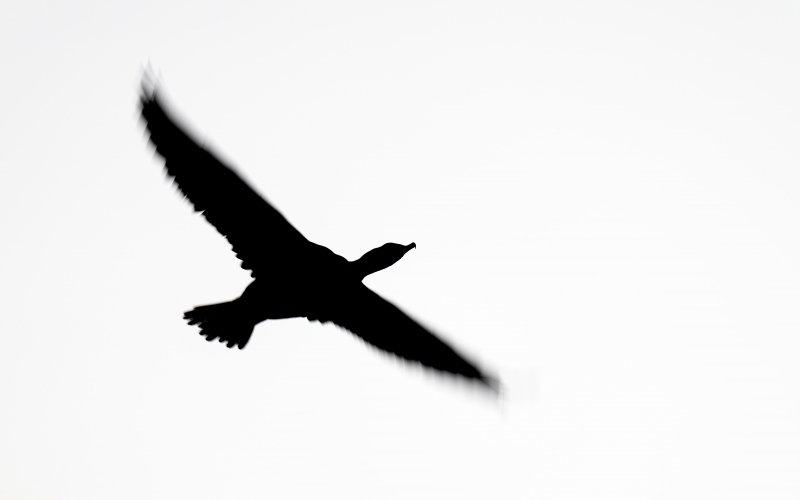
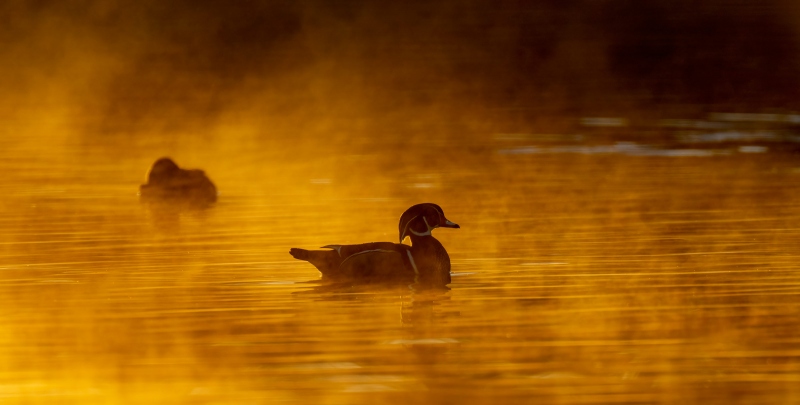
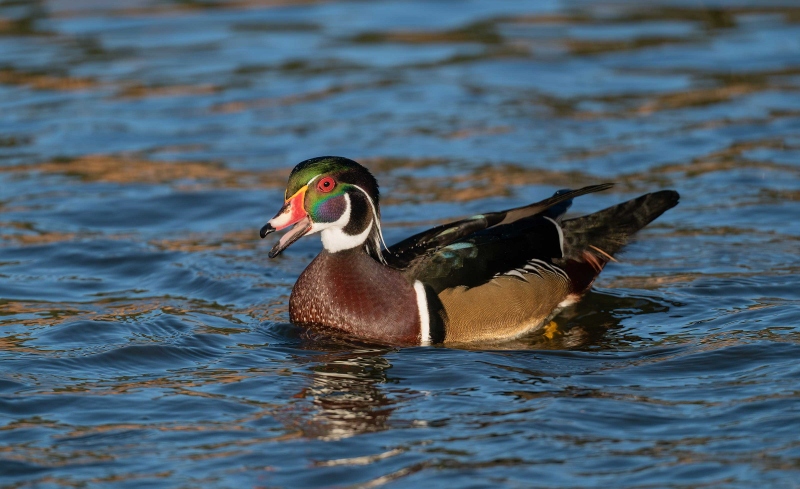
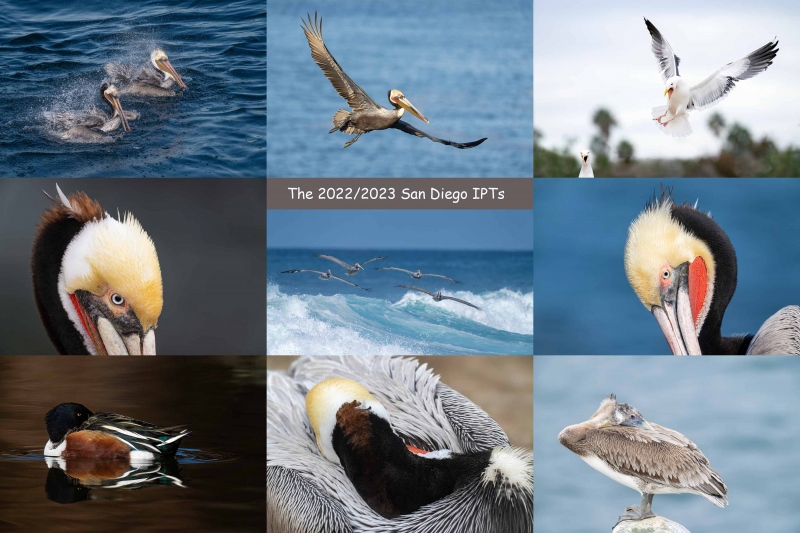
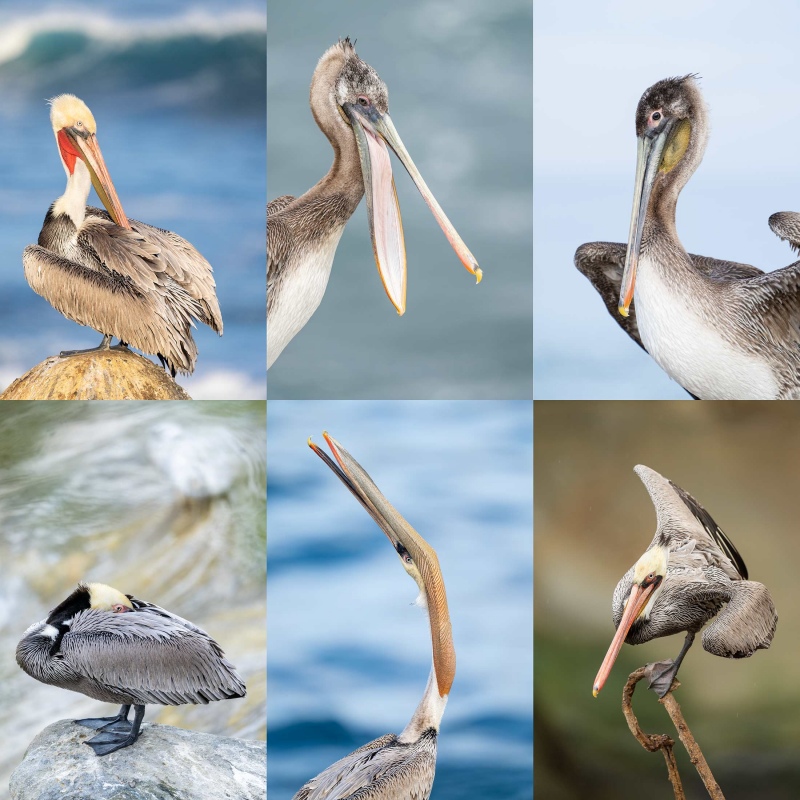
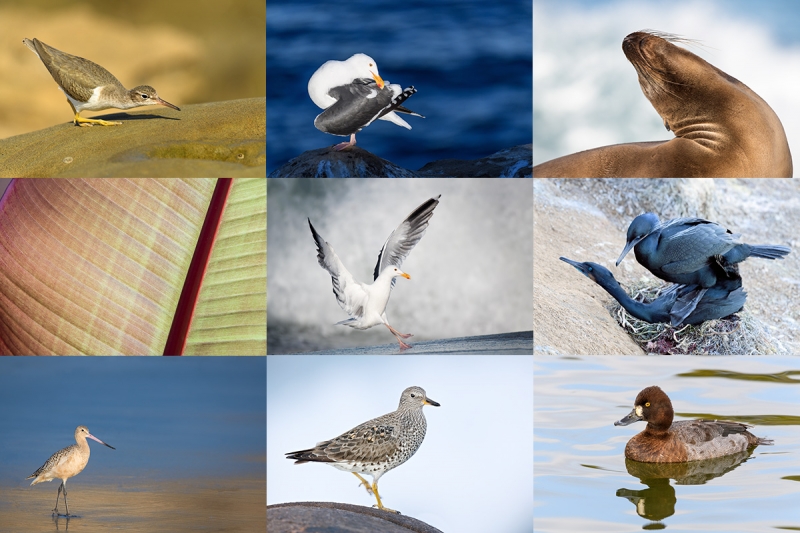

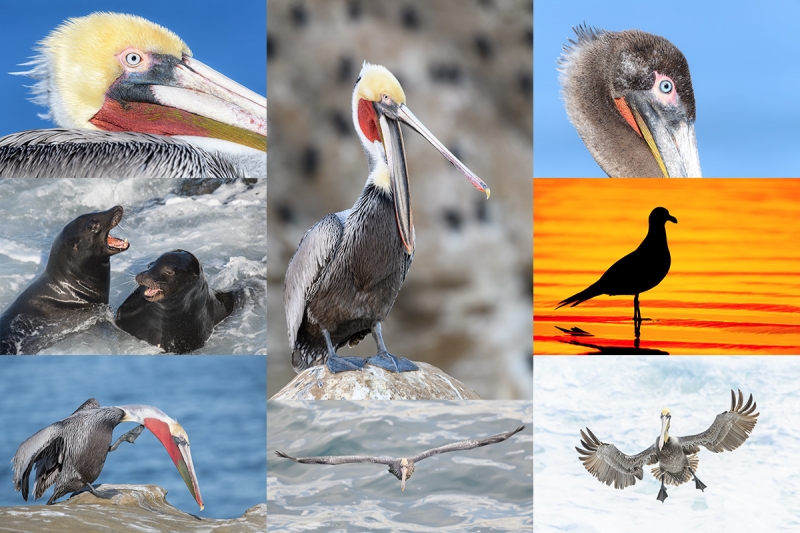














No. 2 is the most interesting, although I’d like to see a few more shots from that morning shoot. For me, it’s hard to beat the mood of of fog and mist, either in person or in a photo.
I like #1. Gorgeous example for “Birds as Art”. Love that image Artie.
Many thanks, much love, a
Number 2. Love the atmosphere in the image. Have a safe trip.
Artie, # 2 without question. Its a Wood Duck sighting most people gon’t get to see. #3 is an OK Wood Duck
Artie
#2 is amazing and so beautiful as if there’s fire in the sky! and there is really, the pano crop is super on this photo almost like if you know what your doing…lol
On #3 if you had the zebras would you have NOT Toasted the neck? Would the neck be your determining point on your setting the zebras?
I would have loved #3 if you had been lower if that was possible
Always with love b
#2 was created BZ, before Zebras and before RawDigger. Yes, you would want only faint Zebras on the neck with the settings we are using. On #3, me too. Lower is difficult to impossible at this location as the banks are steep.
with love, artie
I find that here as well on the river bluffs there is just no way to get lower, i have been enjoying with i think Great White Pelicans, never saw a head throw and that is so amazing.
I thought it was BZ.
Always with love b
American White Pelicans do fast head throws only rarely, usually when they are perched.
with love, artie
Number 1 and 2 are two dark to see well. Number 3 Drake Wood Duck is bright and cute!!
Image #1 is a silhouette — the subject is meant to be black. If #2 looks to dark to see, you need to have your monitor adjusted 🙂
with love, artie